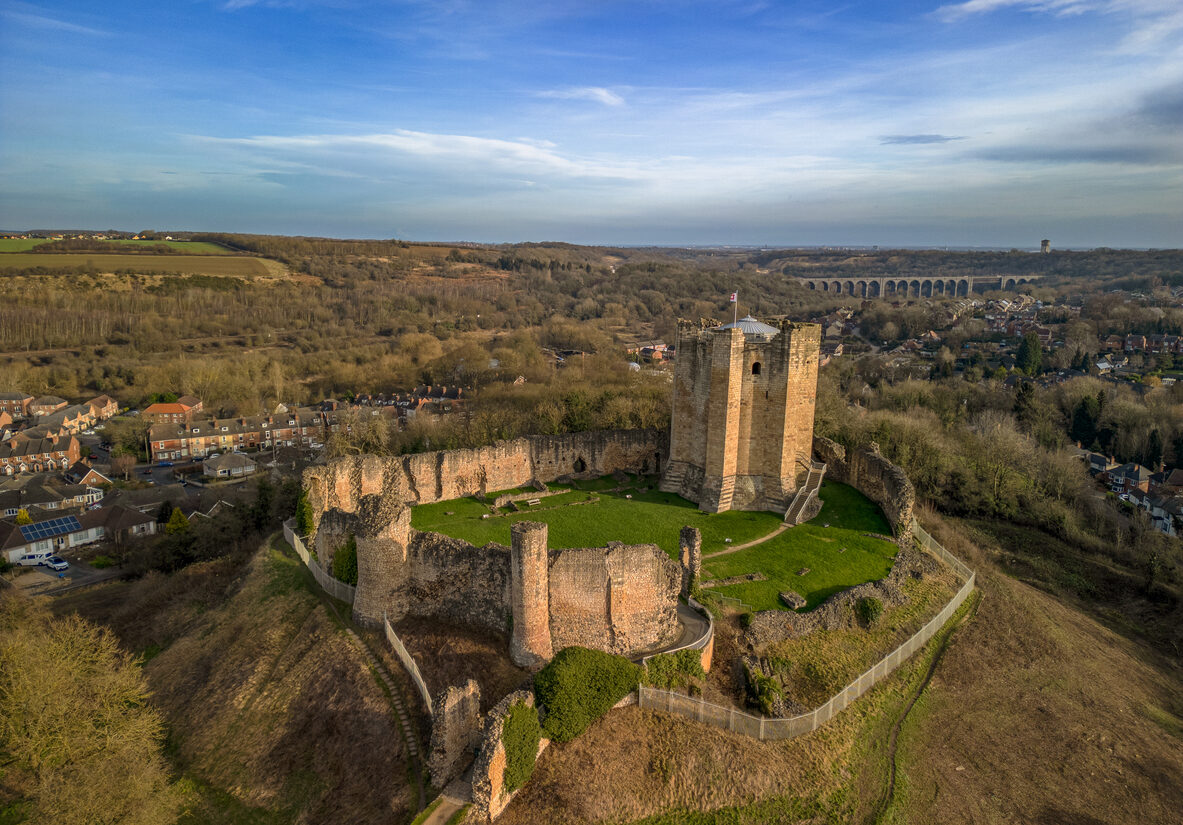 Getty Images
Getty ImagesWhen we think of British history, our minds often jump to the Tower of London, Stonehenge, or the castles of Wales and Scotland. But some of the most fascinating pieces of the past aren’t in guidebooks or featured on glossy postcards. They’re tucked away in plain sight, hidden in modest market towns, quiet villages, or behind modern façades. Here are ten of Britain’s lesser-known historical gems you can stumble upon in surprisingly ordinary places.
The Shell Grotto – Margate, Kent
Beneath the streets of this unassuming seaside town lies a mysterious underground passageway, decorated with over 4 million seashells. Discovered in 1835 by chance when a hole was being dug for a duck pond, the Shell Grotto has baffled historians ever since. No one knows who built it or for what purpose. It could have been an ancient pagan temple, a smugglers’ hideout, or simply an elaborate Victorian folly.
Regardless of its origins, the craftsmanship is astonishing. Winding corridors lead to chambers covered floor to ceiling in patterns made from mussels, whelks, cockles, and oysters. The effect is both eerie and awe-inspiring. Despite being just minutes from the seafront, it still feels like one of Britain’s most surreal secrets, hidden in the heart of a coastal town.
The Singing Ringing Tree – Burnley, Lancashire
At first glance, Burnley might not strike you as a place of cutting-edge sculpture, but perched high on the hills above the town is the Singing Ringing Tree, a wind-powered musical sculpture made of galvanised steel pipes. Installed in 2006 as part of the East Lancashire Panopticons art project, the sculpture uses the wind to produce haunting, melodic tones.
It’s a stark, modern monument in a landscape of old mills and valleys. The eerie sound it creates is haunting and mesmerising, with notes that rise and fall with the strength of the wind. It’s a modern piece of history that reflects the area’s industrial heritage and resilience, while offering panoramic views that rival any country walk.
The Rollright Stones – Chipping Norton, Oxfordshire
Just off a sleepy B-road between Oxfordshire and Warwickshire stands a megalithic stone circle that predates Stonehenge. The Rollright Stones are a collection of prehistoric monuments that include the King’s Men stone circle, the Whispering Knights burial chamber, and the solitary King Stone standing in a nearby field.
Local legend says a witch turned a king and his army to stone, and if you count the stones, you’ll always get a different number. Unlike their more famous counterparts, the Rollright Stones aren’t fenced off or ticketed. You can walk right up to them, sit beside them, and feel the weight of their quiet presence. It’s history without the crowds, in the middle of rolling farmland.
Brading Roman Villa – Brading, Isle of Wight
Tucked away in a quiet corner of the Isle of Wight, Brading Roman Villa is one of Britain’s most significant Roman archaeological sites. It may not look like much from the outside, but inside it holds some of the best-preserved mosaics in the country, along with hypocaust systems, remains of Roman walls, and everyday artefacts that paint a vivid picture of ancient domestic life.
The villa was part of a wealthy Roman farming estate and would have stood as a symbol of Roman authority and culture in Britain. What makes Brading special is its setting—surrounded by countryside, it offers a rare sense of intimacy and scale. You don’t just see the remains—you feel how people might have lived there nearly two thousand years ago.
Croome Court’s Secret RAF Base – Worcestershire
Croome Court is known for its landscaped gardens and elegant Georgian architecture, but during World War II, it was the unlikely location of RAF Defford, a key centre for radar research and testing. The stately home became a hub for scientists and engineers, contributing to major advances in airborne radar.
Today, the house and gardens are maintained by the National Trust, and visitors can explore the restored rooms as well as the RAF museum hidden within the grounds. The contrast between the grandeur of Croome and the wartime innovation that took place there is stark, and it’s a reminder that even the most peaceful places can have extraordinary hidden stories.
The House That Moved – Exeter, Devon
In the heart of Exeter, just a stone’s throw from the cathedral, stands a crooked timber-framed house that looks as though it stepped out of a storybook. Known as “The House That Moved,” it was built in the 14th century and was originally set to be demolished in 1961 to make way for a new road.
Instead, it was placed on rollers and carefully relocated 70 metres to a new site, without dismantling it. The process took days and became a local spectacle. Today, it’s still standing, slightly lopsided but full of charm. It serves as a powerful example of what can be achieved with determination and respect for heritage.
Conisbrough Castle – Conisbrough, South Yorkshire
Often overlooked in favour of more famous castles like Warwick or Leeds, Conisbrough Castle boasts one of the best-preserved Norman keeps in the country. Built in the 12th century, its unusual cylindrical design was innovative for the time and made it both defensible and symbolic of power.
The castle passed through several noble families and was even featured in Sir Walter Scott’s novel “Ivanhoe.” Though it fell into ruin after the medieval period, English Heritage has restored parts of the site and built a modern visitor centre. The surrounding town may be quiet, but the castle is a striking piece of history hiding in plain sight.
The Priory Church of St Mary – Deerhurst, Gloucestershire
Deerhurst is a small, peaceful village near Tewkesbury, but its church is one of the most important examples of Anglo-Saxon architecture in the country. Built around the 8th century, the Priory Church of St Mary has survived Viking raids, the Norman conquest, and centuries of religious reform.
Inside, you’ll find original carved stonework, narrow arched windows, and remnants of decorative friezes that speak to the craftsmanship of early medieval builders. Unlike grand cathedrals, this church has a humble feel—quiet and contemplative, and all the more powerful for it. It’s a place where the layers of history feel close enough to touch.
St. Nicholas Church Ruins – Uphill, Somerset
Perched on a hill overlooking the Bristol Channel, the ruins of St. Nicholas Church are an atmospheric sight. The church dates back to at least the 11th century, though it may stand on even older religious ground. The roofless structure now hosts wildflowers and birds, its crumbling stone walls framing views of the sea and Somerset Levels.
The climb to the top is short but steep, and the reward is a peaceful, timeless space that feels almost untouched. It’s easy to overlook in a region packed with tourist sites, but it’s a striking reminder of the medieval past, and the ways nature gently reclaims what time leaves behind.
The Time Ball Tower – Deal, Kent
Along the seafront in Deal stands a square tower that once played a vital role in 19th-century navigation. Every day at precisely 1 p.m., a large ball atop the tower would drop, signalling the exact time to ships anchored offshore. It was linked via telegraph to the Royal Observatory in Greenwich.
Though no longer operational, the Time Ball Tower has been restored as a museum and stands as a curious relic of maritime precision. It’s easy to walk past without noticing—but it once helped shape the rhythms of global trade and seafaring. It’s proof that even the most unassuming buildings can hide stories of technological importance.
Next time you find yourself driving through a sleepy British town or stopping off in a village you’ve never heard of, have a second look. That nondescript building, odd-looking mound, or quiet church might just hold centuries of untold stories. History isn’t always where you expect it, and that’s exactly what makes these hidden gems so unforgettable.



